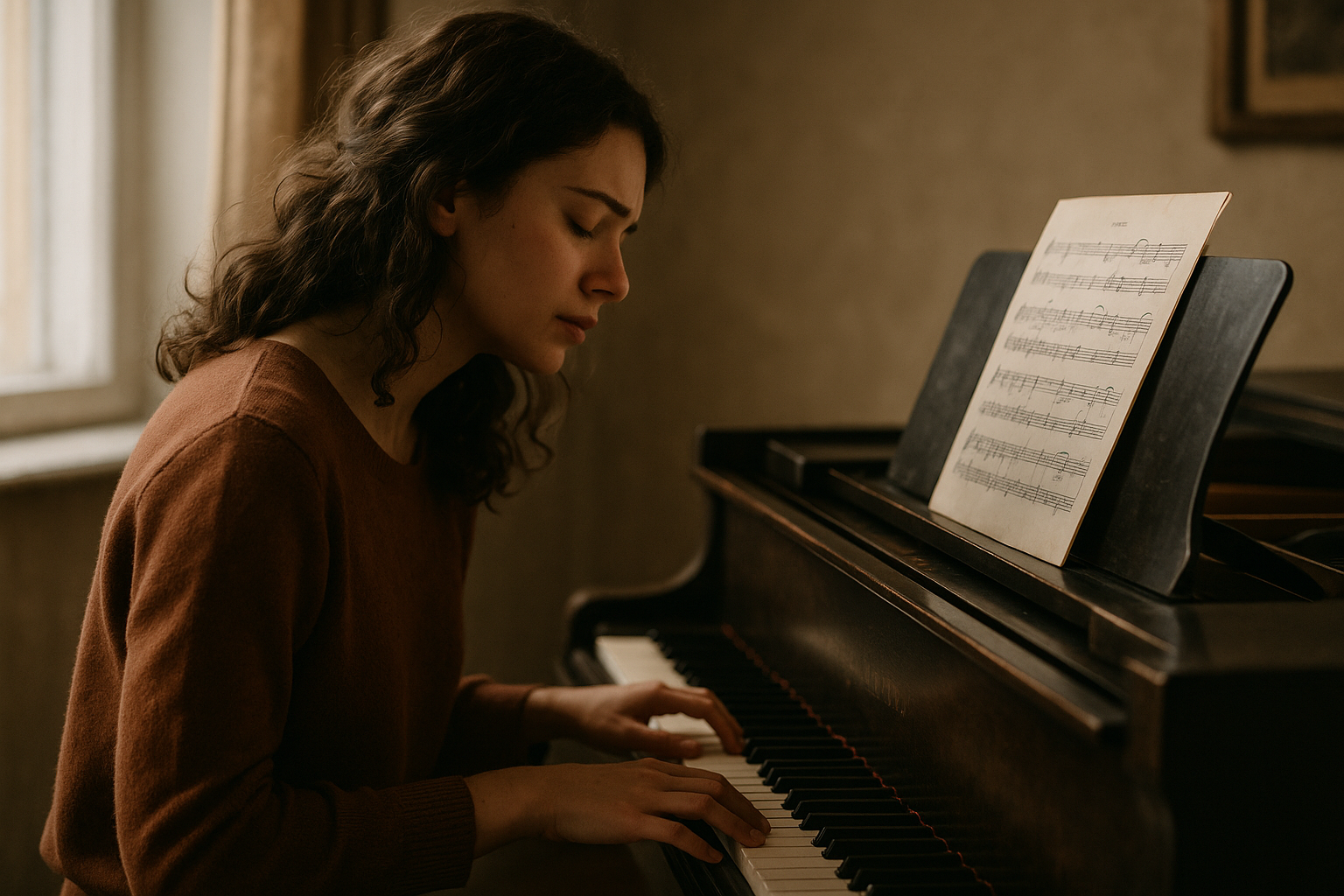When we think about what makes music powerful, it is rarely the technical details or the complexity of the notes on the page. Instead, it is the emotion behind the sound—the way a melody can bring joy, sadness, nostalgia, or excitement. Music is often described as a universal language because it speaks directly to our emotions, bypassing words. For composers, understanding the role of emotion in musical creation is essential not only for writing impactful pieces but also for connecting deeply with audiences.
In this article, we’ll explore how emotions shape composition, why they are so central to music-making, and how beginners can harness their own feelings to create expressive and meaningful works.
Why Emotions Matter in Music Composition
Music as Emotional Communication
From ancient chants to modern film scores, music has always been a tool for expressing emotions that words cannot capture. A single chord progression can communicate longing, while a rhythmic groove can inspire movement and joy.
Emotion Drives Creativity
Many composers begin with a feeling rather than a technical plan. That spark of inspiration guides choices in melody, harmony, and rhythm.
Audiences Connect Through Emotion
Listeners may not know theory, but they instantly sense the mood of a piece. Emotional impact is what makes music memorable.
Emotions Shape Identity
Your emotional voice becomes part of your unique musical style. Even beginners can develop a personal sound by expressing authentic feelings.
How Emotions Influence Musical Elements
Melody
Melodies often carry the emotional core. Rising lines may suggest hope, while descending ones may evoke sadness.
Harmony
Major chords tend to sound bright or happy, while minor chords often convey melancholy. Dissonance creates tension, and resolution provides relief.
Rhythm
Fast tempos energize and excite, while slow rhythms calm or create suspense. Syncopation can add playfulness or surprise.
Dynamics
Changes in volume—from whispering pianissimo to booming fortissimo—mirror emotional intensity.
Timbre
The color of sound influences mood. A soft flute feels different from a brassy trumpet, even on the same notes.
Silence
Pauses can heighten emotion, allowing listeners to reflect or anticipate what comes next.
Using Emotions as Inspiration
Start With a Feeling
Instead of asking, “What notes should I use?” ask, “What do I want the listener to feel?” Let emotion guide your first ideas.
Keep a Musical Journal
Record short phrases when you feel strong emotions. Over time, these fragments can develop into full pieces.
Translate Life Experiences
Draw on personal memories—joy, loss, excitement, or calm—as seeds for composition.
Use Imagery
Visualize scenes or colors that match your emotion. Many composers associate music with imagery to inspire creativity.
Exercises for Emotional Composition
- One Emotion, One Melody
Pick an emotion (joy, sadness, anger) and create a short melody to express it. - Change the Emotion
Take the same melody and alter rhythm, harmony, or dynamics to convey a different emotion. - Emotion Diary
At the end of the day, write a short musical phrase reflecting how you feel. - Instrument Experimentation
Play the same phrase on different instruments to see how timbre changes emotion. - Film Scene Exercise
Choose a silent movie clip and compose music to match the mood.
How Different Genres Express Emotion
- Classical: Often uses dynamic contrast and harmonic tension to create drama.
- Jazz: Expresses emotion through improvisation, swing feel, and blues influences.
- Pop: Relies on relatable lyrics and catchy melodies that evoke shared emotions.
- Rock: Uses energy, distortion, and strong rhythms to convey passion and intensity.
- Blues: Centers on raw emotional storytelling, often about struggle and resilience.
- Film Music: Specializes in guiding audience emotions, from fear to triumph.
Exploring multiple genres helps beginners see the many ways emotions can shape music.
Common Challenges in Emotional Composition
- Overcomplicating
Beginners may think emotion requires complex theory. Simple melodies can be deeply moving. - Forcing Emotion
If the music doesn’t feel authentic, it won’t connect. Start with what you genuinely feel. - Neglecting Technique
While emotion is central, technical skills are still important for expressing ideas clearly. - Fear of Vulnerability
Sharing emotional music feels personal. But vulnerability is what makes art resonate.
The Psychological Impact of Writing Emotionally
Composing emotionally is not just about the audience—it also helps the composer:
- Self-Expression: Writing music can help process emotions.
- Stress Relief: Channeling feelings into sound reduces tension.
- Confidence: Creating music that feels authentic builds artistic identity.
How Teachers Can Encourage Emotional Composition
Good teachers guide students to connect emotion with technique by:
- Asking what a student wants a piece to feel like.
- Encouraging improvisation based on emotions.
- Showing how professionals use expression in their music.
Long-Term Benefits of Emotional Composition
- Development of a personal style.
- Stronger connection with audiences.
- Increased creativity and originality.
- More fulfilling and meaningful practice.
Final Thoughts: Music as Emotional Storytelling
At its heart, music is storytelling through sound. Notes, rhythms, and harmonies are the tools, but emotion is the story itself. Whether you’re a beginner writing your first melody or an experienced composer shaping a symphony, connecting with your emotions is the key to creating music that matters.
Remember: technical skills can always be improved with practice, but authenticity comes from within. By embracing your emotions and allowing them to guide your compositions, you not only improve as a musician but also create works that truly touch others.
The next time you sit down to compose, don’t just ask, What should I write? Instead, ask, What do I feel, and how can I share it through music? That shift in perspective may be the key to unlocking your most powerful and expressive work.
